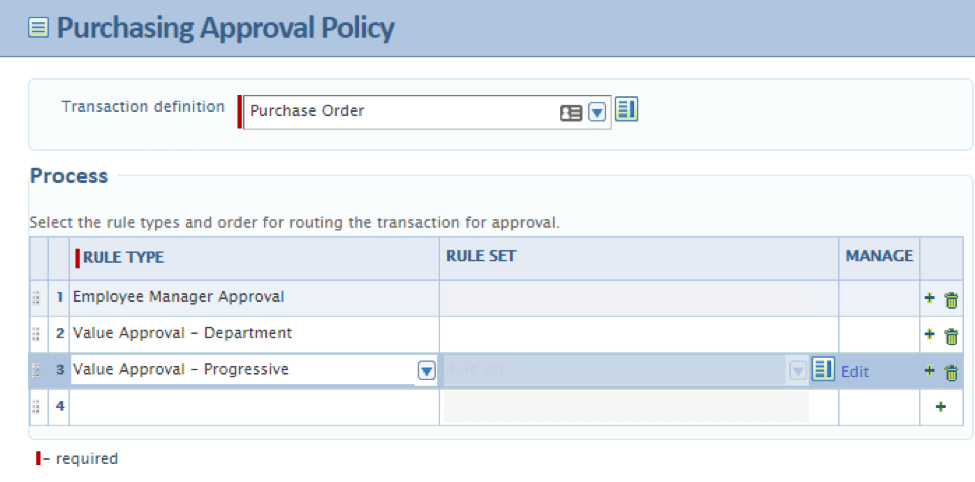- Expanded document approval capabilities. Previously, Intacct Employee users only had the capability to approve Purchase Requisitions. With Intacct’s 2017 Release 3 (effective August 18th), Employee users will now be able to approve Purchase Orders and Invoices. These changes provide the following new functionality:
- Different approval work flows for different transaction types: Purchase Requisitions, Purchase Orders, and Invoices can each have their own approval process defined, based on the approval needs. For instance, Requisition approvals may be delegated to an employee manager level, so that approval requests to higher level management personnel is reduced. If the Requisition passes the employee manager level, and is then converted to a Purchase Order, management can then approve the Purchase Order. Note: for those organizations that do not want to use Purchase Order Requisitions, they can keep the functionality of Employee user approvals by using a Purchase Requisition document relabeled as a Purchase Order.
- PO Invoice approval – Previously, PO Invoices could not be assigned an approval process. When Purchase Orders were converted into a PO Invoices, there was no approval oversight before posting. With Invoice approvals available in Intacct’s 2017 Release 3, those people most familiar with the transaction (i.e. employees, managers, department heads) can be assigned the task of electronically approving an invoice. Gone are the days of managers manually signing off on paper documents! The same functionality for increasing levels of value and tiered approvals can also be applied to PO Invoice approvals. An audit trail of each approval is maintained within Intacct.
- Redesigned Approval Setup – with Intacct 2017 Release 2 the Approval Setup screen has been changed to provide a more graphical representation of the Approval Process. Located in the Purchase Order / Setup / Purchasing Approval Policies page, users are presented with a grid of approval steps for each transaction type – Purchase Requisition, Purchase Order, and Invoices (below).









